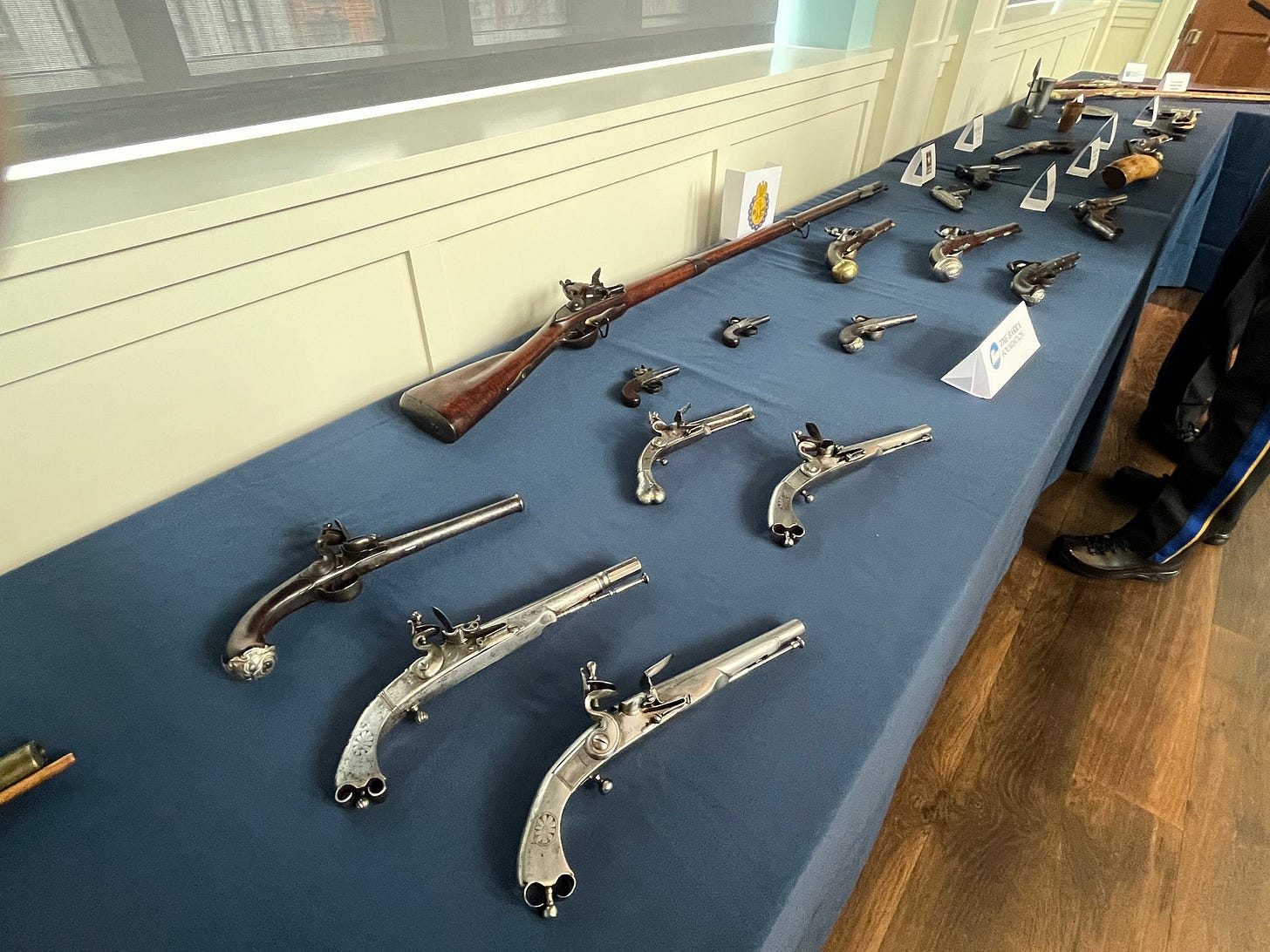Collecting the past
This week brought a news story about a man with a collection of guns, stolen from museums over fifty years.
For untold years in the mouse-infested, secret crawlspace of an attic in Newark, Delaware, a man named Michael Kintner Corbett kept priceless American history locked away from the world.
That is, until the FBI came calling.
On May 24, 2017, FBI agents led by art crimes Special Agent Jake Archer executed a search warrant and found the hidden upper room of Corbett’s Newark residence and a safe tucked in the basement.
In the process, the agents broke open a 50-year mystery spanning six states, 16 museums and dozens of historic firearms whose provenance spans the entire history of America – a rash of museum burglaries Archer calls “one of the largest of its kind that we’re aware of.”
Museums and archives often contain valuable things that make them targets for thieves, sometimes with rather odd predilections (rather than just seeking money).
And when we think of what museums hold: firearms, or teapots, or ancient artefacts, it raises questions of what counts as historic, and why we should hold it on display as significant. It’s a question that has many answers, as the nature of museums themselves has evolved.
I’m sure you remember visits to museums as a child, taken by parents; or on a class trip, teamed up with a buddy and armed with a worksheet about dinosaurs. We know the drill. Nod wisely at the Dutch Old Masters or fossils, pay through the nose for a coffee. The exit is through the gift shop, an expansive haven of coffee table books, chunky necklaces and scarves printed with Monet waterlilies.
But museums as we know them emerged from the world of private collecting. People enjoy collecting things, whether it’s an oil magnate with impressionist art, or your Aunt Sylvia with her Hummel figurines. In the early modern period, bits of the exotic or strange were in “cabinets of curiosity” in many great houses. Those who could afford to, collected everything from religious relics to ostrich eggs. Owning, acquiring and keeping, was a mark of affluence. Now we all own too many things, seeking ways to store, to declutter, to deaccession (in museum terms) our own archives.



